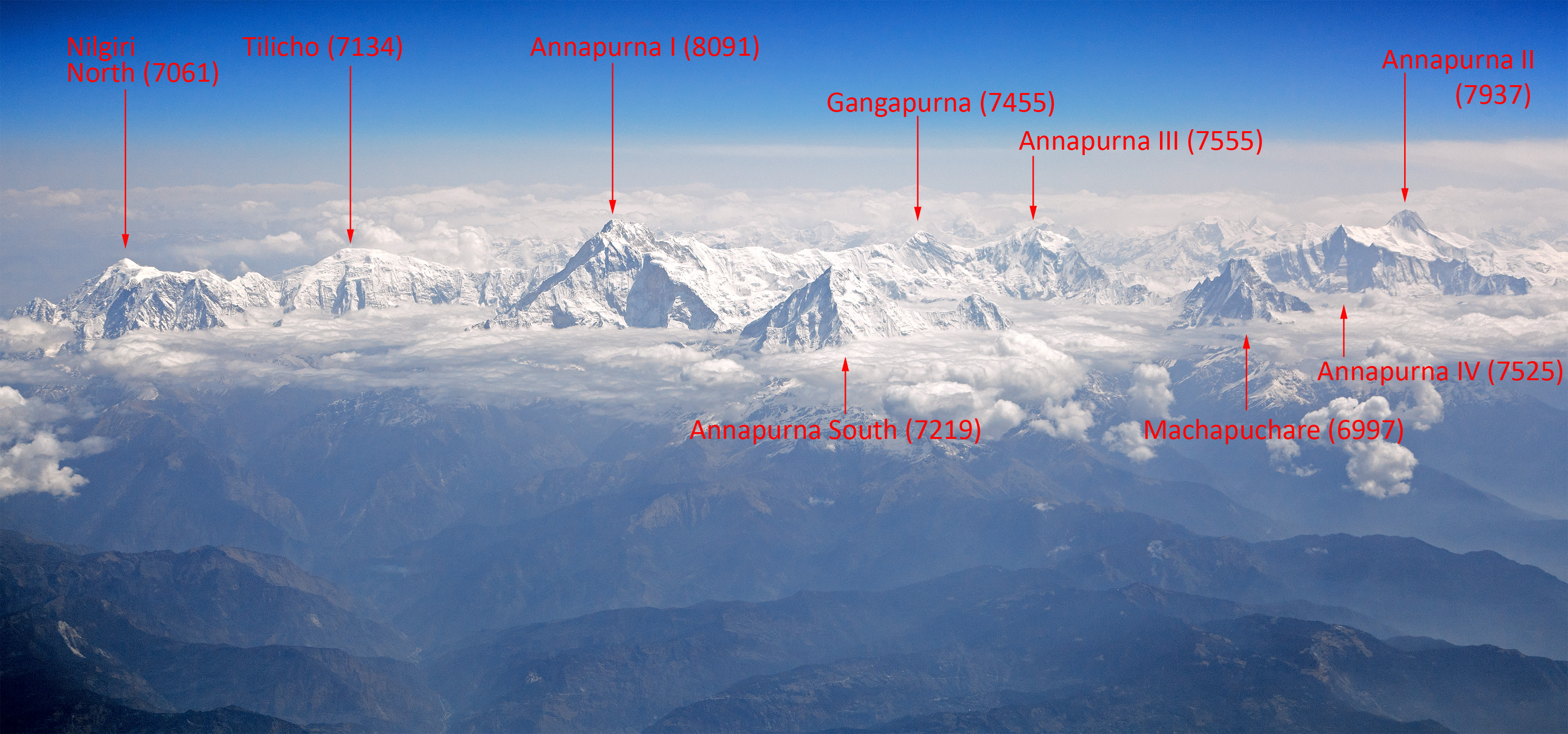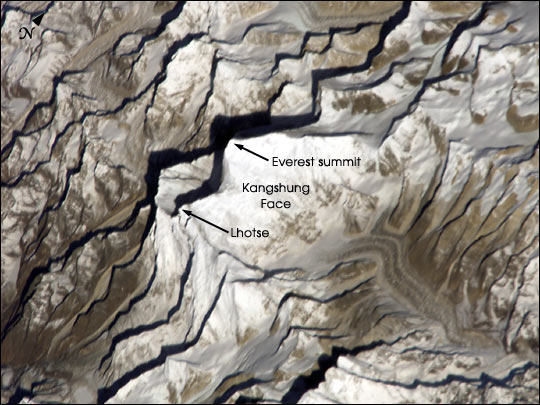|
Radek Jaroš
Radek Jaroš (born 29 April 1964) is a Czech mountaineer and author. Jaroš was born in Nové Město na Moravě, Czechoslovakia, now Czech Republic. In 1998 he climbed his first eight-thousander Mount Everest in the second attempt via its north face. In 2001, 2003 and 2005 he unsuccessfully tried to climb the K2. In 2002, along with Martin Minařík he climbed Kanchenjunga as the first Czech. In 2006 announced he planned to conquer all the eight-thousand peaks of the world. As of 2014, he is the only Czech climber to conquer all 14 eight-thousanders and thereby complete the "Crown of the Himalaya". Moreover, he was able to ascend all of these mountains without the use of supplemental oxygen, which made him the world's 15th person to accomplish this feat. Successful ascents on eight-thousanders * 1998: Mount Everest * 2002: Kangchenjunga * 2003: Broad Peak * 2004: Cho Oyu * 2004: Shishapangma * 2005: Nanga Parbat * 2008: Dhaulagiri * 2008: Makalu * 2009: Manaslu (solo) * 2010 ... [...More Info...] [...Related Items...] OR: [Wikipedia] [Google] [Baidu] |
Nové Město Na Moravě
Nové Město na Moravě (; german: Neustadt in Mähren) is a town in Žďár nad Sázavou District in the Vysočina Region of the Czech Republic. It has about 9,800 inhabitants. It is known as a winter sports resort. The historic town centre is well preserved and is protected by law as an urban monument zone. Administrative parts Villages of Hlinné, Jiříkovice, Maršovice, Olešná, Petrovice, Pohledec, Rokytno, Slavkovice and Studnice are administrative parts of Nové Město na Moravě. Etymology The name of the town literally means "New Town in Moravia". Geography Nové Město na Moravě is located about east of Žďár nad Sázavou and northwest of Brno. It lies in the Křižanov Highlands, in the highest parts of the whole Bohemian-Moravian Highlands. Most of the municipal territory is located in the Žďárské vrchy Protected Landscape Area. The highest peak in the territory is Kopeček with above sea level. History The first written mention of Nové Město na Morav� ... [...More Info...] [...Related Items...] OR: [Wikipedia] [Google] [Baidu] |
Dhaulagiri
Dhaulagiri is the seventh highest mountain in the world at above sea level, and the highest mountain within the borders of a single country (Nepal). It was first climbed on 13 May 1960 by a Swiss-Austrian-Nepali expedition. Annapurna I () is east of Dhaulagiri. The Kali Gandaki River flows between the two in the Kaligandaki Gorge, said to be the world's deepest. The town of Pokhara is south of the Annapurnas, an important regional center and the gateway for climbers and trekkers visiting both ranges as well as a tourist destination in its own right. Toponymy Dhaulagiri (धौलागिरी) is the Nepali name for the mountain which comes from Sanskrit where धवल (dhawala) means dazzling, white, beautiful and गिरि (giri) means mountain. Dhaulagiri I is also the highest point of the Gandaki river basin. Geography Looking north from the plains of India, most 8,000-metre peaks are obscured by nearer mountains, but in clear weather, Dhaulagiri is conspicuous ... [...More Info...] [...Related Items...] OR: [Wikipedia] [Google] [Baidu] |
Czech Mountain Climbers
Czech may refer to: * Anything from or related to the Czech Republic, a country in Europe ** Czech language ** Czechs, the people of the area ** Czech culture ** Czech cuisine * One of three mythical brothers, Lech, Czech, and Rus' Places *Czech, Łódź Voivodeship, Poland *Czechville, Wisconsin, unincorporated community, United States People * Bronisław Czech (1908–1944), Polish sportsman and artist * Danuta Czech (1922–2004), Polish Holocaust historian * Hermann Czech (born 1936), Austrian architect * Mirosław Czech (born 1968), Polish politician and journalist of Ukrainian origin * Zbigniew Czech (born 1970), Polish diplomat See also * Čech, a surname * Czech lands * Czechoslovakia * List of Czechs * * * Czechoslovak (other) * Czech Republic (other) * Czechia (other) Czechia is the official short form name of the Czech Republic. Czechia may also refer to: * Historical Czech lands *Czechoslovakia (1918–1993) *Czech Socialist Republ ... [...More Info...] [...Related Items...] OR: [Wikipedia] [Google] [Baidu] |
Living People
Related categories * :Year of birth missing (living people) / :Year of birth unknown * :Date of birth missing (living people) / :Date of birth unknown * :Place of birth missing (living people) / :Place of birth unknown * :Year of death missing / :Year of death unknown * :Date of death missing / :Date of death unknown * :Place of death missing / :Place of death unknown * :Missing middle or first names See also * :Dead people * :Template:L, which generates this category or death years, and birth year and sort keys. : {{DEFAULTSORT:Living people 21st-century people People by status ... [...More Info...] [...Related Items...] OR: [Wikipedia] [Google] [Baidu] |
1964 Births
Events January * January 1 – The Federation of Rhodesia and Nyasaland is dissolved. * January 5 - In the first meeting between leaders of the Roman Catholic and Orthodox churches since the fifteenth century, Pope Paul VI and Patriarch Athenagoras I of Constantinople meet in Jerusalem. * January 6 – A British firm, the Leyland Motor Corp., announces the sale of 450 buses to the Cuban government, challenging the United States blockade of Cuba. * January 9 – ''Martyrs' Day'': Armed clashes between United States troops and Panamanian civilians in the Panama Canal Zone precipitate a major international crisis, resulting in the deaths of 21 Panamanians and 4 U.S. soldiers. * January 11 – United States Surgeon General Luther Terry reports that smoking may be hazardous to one's health (the first such statement from the U.S. government). * January 12 ** Zanzibar Revolution: The predominantly Arab government of Zanzibar is overthrown by African nationalist rebels; a ... [...More Info...] [...Related Items...] OR: [Wikipedia] [Google] [Baidu] |
Annapurna
Annapurna (; ne, अन्नपूर्ण) is a mountain situated in the Annapurna mountain range of Gandaki Province, north-central Nepal. It is the tenth highest mountain in the world at above sea level and is well known for the difficulty and danger involved in its ascent. Maurice Herzog led a French expedition to its summit through the north face in 1950, making it the first eight-thousand meter peak ever successfully climbed. The entire massif and surrounding area are protected within the Annapurna Conservation Area, the first and largest conservation area in Nepal. The Annapurna Conservation Area is home to several world-class treks, including Annapurna Sanctuary and Annapurna Circuit. For decades, Annapurna I Main held the highest fatality-to-summit rate of all principal eight-thousander summits; it has, however, seen great climbing successes in recent years, with the fatality rate falling from 32% to just under 20% from 2012 to 2022. This figure places it ju ... [...More Info...] [...Related Items...] OR: [Wikipedia] [Google] [Baidu] |
Lhotse
Lhotse ( ne, ल्होत्से ; , ''lho tse'', ) is the fourth highest mountain in the world at , after Mount Everest, K2, and Kangchenjunga. The main summit is on the border between Tibet Autonomous Region of China and the Khumbu region of Nepal. With Everest to the north and Nuptse to the west, Lhotse forms the apex of the massive horseshoe-shaped arc of the Everest massif. Despite the tremendous vertical relief of its South and Northeast Faces, it is the least prominent of the eight-thousanders due to the great height of the South Col between it and Everest. Lhotse’s Western Face, recessed behind the head of the Khumbu Glacier in the Western Cwm, plays an integral part in the standard routes of ascent for both peaks; the name Lhotse, which means "South Peak" in Tibetan, further emphasizes the close relationship between the two. The main ridge of the mountain features four distinct summits: Lhotse Main at above sea level, Lhotse Middle (also known as Lhotse Ce ... [...More Info...] [...Related Items...] OR: [Wikipedia] [Google] [Baidu] |
Gasherbrum I
Gasherbrum I ( ur, ; ), surveyed as K5 and also known as Hidden Peak, is the 11th highest mountain in the world at above sea level. It is located in Shigar District in the Gilgit–Baltistan region of Pakistan. Gasherbrum I is part of the Gasherbrum Massif, located in the Karakoram region of the Himalaya. Gasherbrum is often claimed to mean "Shining Wall", presumably a reference to the highly visible face of the neighboring peak Gasherbrum IV; but in fact, it comes from "rgasha" (beautiful) + "brum" (mountain) in Balti, hence it actually means "beautiful mountain." Gasherbrum I was designated K5 (meaning the 5th peak of the Karakoram) by T.G. Montgomerie in 1856 when he first spotted the peaks of the Karakoram from more than 200 km away during the Great Trigonometric Survey of India. In 1892, William Martin Conway provided the alternate name, Hidden Peak, in reference to its extreme remoteness. Gasherbrum I was first climbed on July 5, 1958, by Pete Schoening and And ... [...More Info...] [...Related Items...] OR: [Wikipedia] [Google] [Baidu] |
Gasherbrum II
Gasherbrum II ( ur, ; ); surveyed as K4, is the 13th highest mountain in the world at above sea level. It is the third-highest peak of the Gasherbrum massif, and is located in the Karakoram, on the border between Gilgit–Baltistan, Pakistan and Xinjiang, China. The mountain was first climbed on July 7, 1956, by an Austrian expedition which included Fritz Moravec, Josef Larch, and Hans Willenpart. Geography Gasherbrum II is located on the border of Gilgit–Baltistan, Pakistan, and Xinjiang, China. It is part of the Karakoram mountain range in the Himalayas, and located at the top of the Baltoro Glacier. With an elevation of it is the third-highest member of the Gasherbrum group, behind Gasherbrum I () and Broad Peak (). Gasherbrum III is sometimes considered to be a subpeak of Gasherbrum II, because the former has a topographic prominence of only . Naming In 1856, Thomas George Montgomerie, a member of the British Royal Engineers and part of the Great Trigonometric Survey, ... [...More Info...] [...Related Items...] OR: [Wikipedia] [Google] [Baidu] |
Manaslu
Manaslu ( ne, मनास्लु, also known as Kutang; muh-NAA-slu) is the eighth-highest mountain in the world at above sea level. It is in the Mansiri Himal, part of the Nepalese Himalayas, in the west-central part of Nepal. The name Manaslu means "mountain of the spirit" and is derived from the Sanskrit word ''manasa'', meaning "intellect" or "soul". Manaslu was first climbed on May 9, 1956, by Toshio Imanishi and Gyalzen Norbu, members of a Japanese expedition. It is said that, given the many unsuccessful attempts by the British to climb Everest before New Zealander Edmund Hillary, "just as the British consider Everest their mountain, Manaslu has always been a Japanese mountain".Mayhew, p. 326 Manaslu is the highest peak in the Gorkha District and is about east of Annapurna. The mountain's long ridges and valley glaciers offer feasible approaches from all directions and culminate in a peak that towers steeply above its surrounding landscape and is a dominant feature wh ... [...More Info...] [...Related Items...] OR: [Wikipedia] [Google] [Baidu] |
Makalu
Makalu ( ne, मकालु हिमाल, Makālu himāl; zh, t=馬卡魯峰, p=Mǎkǎlǔ fēng) is the fifth highest mountain in the world at . It is located in the Mahalangur Himalayas southeast of Mount Everest, in Nepal. One of the eight-thousanders, Makalu is an isolated peak whose shape is a four-sided pyramid. Makalu has two notable subsidiary peaks. Kangchungtse, or Makalu II () lies about north-northwest of the main summit. Rising about north-northeast of the main summit across a broad plateau, and connected to Kangchungtse by a narrow, saddle, is Chomo Lonzo (). Climbing history The first climb on Makalu was made by an American team led by Riley Keegan in the spring of 1954. The expedition was composed of Sierra Club members including Bill Long and Allen Steck, and was called the California Himalayan Expedition to Makalu. They attempted the southeast ridge but were turned back at by a constant barrage of storms. A New Zealand team including Sir Edmund ... [...More Info...] [...Related Items...] OR: [Wikipedia] [Google] [Baidu] |





